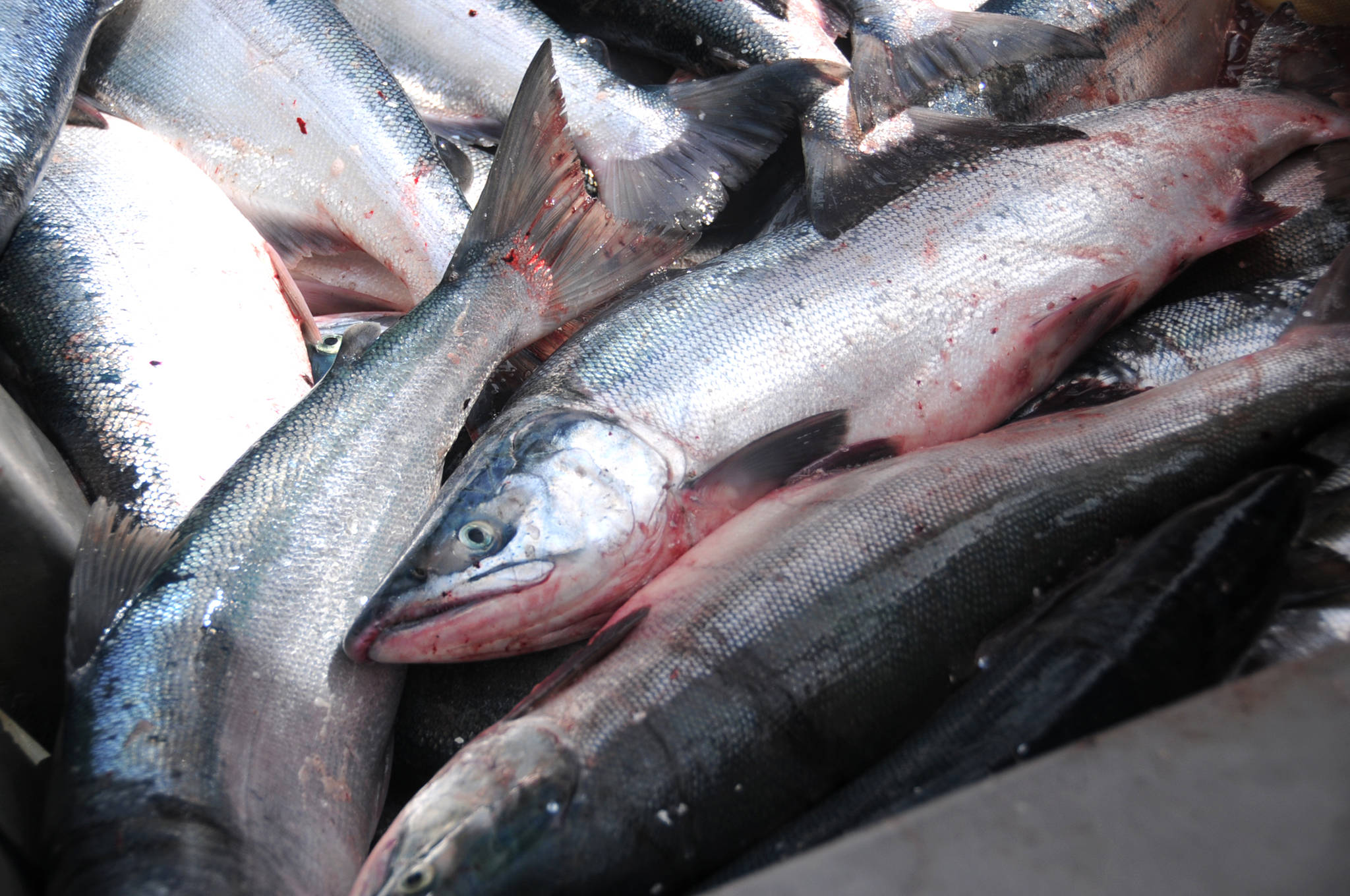Editor’s note: This article has been updated to correct an error about the sampling area of the Kodiak Management Area sockeye salmon genetic study. The study included the setnet harvests as well as seine harvests. The agenda change request, if taken up, would have been accepted and added to the docket before the 2019–2020 Kodiak area meeting. The article has also been corrected to show that Susitna sockeye salmon are a stock of yield concern.
The Board of Fisheries won’t take up an out-of-cycle request to cap Kodiak sockeye salmon harvests during certain periods of the season, though it won’t be the last time the issue comes up.
The board declined to accept an agenda change request that proposed a new management plan for the commercial sockeye salmon fishery in the Kodiak Management Area setting weekly and seasonal limits on sockeye harvest. The request, submitted by the United Cook Inlet Drift Association, raises concerns brought to light in a recent Alaska Department of Fish and Game genetic study showing that Kodiak commercial fishermen catch hundreds of thousands of Cook Inlet-bound sockeye salmon during the summer.
An agenda change request, if accepted, would have added the proposal to the docket for an upcoming meeting within the next few months, as opposed to waiting until the next Kodiak cycle meeting in 2019–2020. However, the board members rejected it, with some saying they agreed it was a conservation concern but that an agenda change request was not the right venue to address it.
The United Cook Inlet Drift Association wrote in its request that the proposal was based largely on allocation concerns after the revelations of the Kodiak sockeye harvest sampling study.
“Now … with the aid of genetics, we know much more about the timing, locations, extent and magnitude of the harvests of the Cook Inlet origin salmon stocks,” the request states. “This ACR is a first opportunity to look at the harvests of Cook Inlet stocks in the Kodiak Management Area.”
The study, originally presented at the Board of Fisheries meeting in Kodiak in January and again at the Upper Cook Inlet meeting in February, analyzed genetic information from sockeye harvested in select areas of Kodiak during the commercial fishing season. Over three years, the researchers put together a picture of which sockeye stocks are harvested in the Kodiak fishery, ultimately finding that most of them were Kodiak-bound but a portion were Cook Inlet fish. In one year of the study, Cook Inlet stocks contributed 37 percent of the total harvest in the sampling areas, with the other two years less than that.
The Board of Fisheries requested that the researchers further analyze the data to break out stream-specific stocks within Cook Inlet for the work session. Fish and Game geneticist Kyle Shedd presented those results at the meeting Thursday, again cautioning that the results shouldn’t be applied too broadly because the researchers didn’t sample all the areas and it was only a three-year study.
According to the stream system breakout, the Kenai River contributed the most fish to the Kodiak sockeye harvest, at more than 5 percent in 22 of the 47 time periods analyzed. Kasilof River and Susitna River sockeye were less common, correlating with the size of the runs on the three rivers.
Shedd noted that there were indications of a trend with Cook Inlet fish being caught predominately in the southwestern sampling areas early in the season and further north and east later in the season, but the researchers hadn’t drawn enough data to form a solid correlation to back that up.
A thorny part of the problem is the style of state management among commercial fisheries in Alaska — Kodiak and Cook Inlet commercial fisheries are managed separately, with different fishing periods and separate management offices, based on separate management plans with different escapement goals. Cook Inlet fishermen to ask to modify another fishery’s management regime raised loud objections among Kodiak commercial fishermen. Dozens of written public comments poured in before the meeting, every single one of them in opposition to the agenda change request.
The Kodiak Island Borough and City of Kodiak submitted a joint letter opposing the request, saying that managers have known for years that Cook Inlet stocks are intercepted in Kodiak and they’ve been able to account for that.
“All of our communities in Kodiak are salmon-dependent communities, and decades of effective State management have maintained healthy returns that contribute to the backbone of our Archipelago’s economy,” the letter stated.
Board member Israel Payton, a Matanuska-Susitna Valley resident, said during the debate on the agenda change request that the revelations in the Kodiak sockeye sampling study raised conservation concerns for the Susitna sockeye, which are designated a stock of yield concern.
The Susitna sockeye have had poor returns for the past decade or so, leading to restrictions on the Cook Inlet drift gillnet fleet and other commercial fishermen to increase passage of Susitna sockeye. After the drift gillnet fleet in Upper Cook Inlet, by percentage, Kodiak seiners are the largest harvester of Susitna sockeye, Payton said.
“The question to the board would be that should Kodiak share in that burden of conservation, being the second largest harvester of that stock?” he said.
Board member Robert Ruffner agreed that there was cause for concern but disagreed that the board should address it through the agenda change request.
“When we start talking about sharing the burden of conservation, then we have to talk about these big tradeoffs, and there are some potentially big tradeoffs here,” he said. “We have gotten more information in the public comment period than we could possibly get through.”
Board member Reed Morisky said he wouldn’t support it becase it was mostly allocative rather than about conservation.
“It’s out of cycle, it doesn’t serve the public process,” he said. “The public depends on a predictable plan of how we adjudicate our business.”
The board voted 7-0 not to take up the request.
Reach Elizabeth Earl at elizabeth.earl@peninsulaclarion.com.

